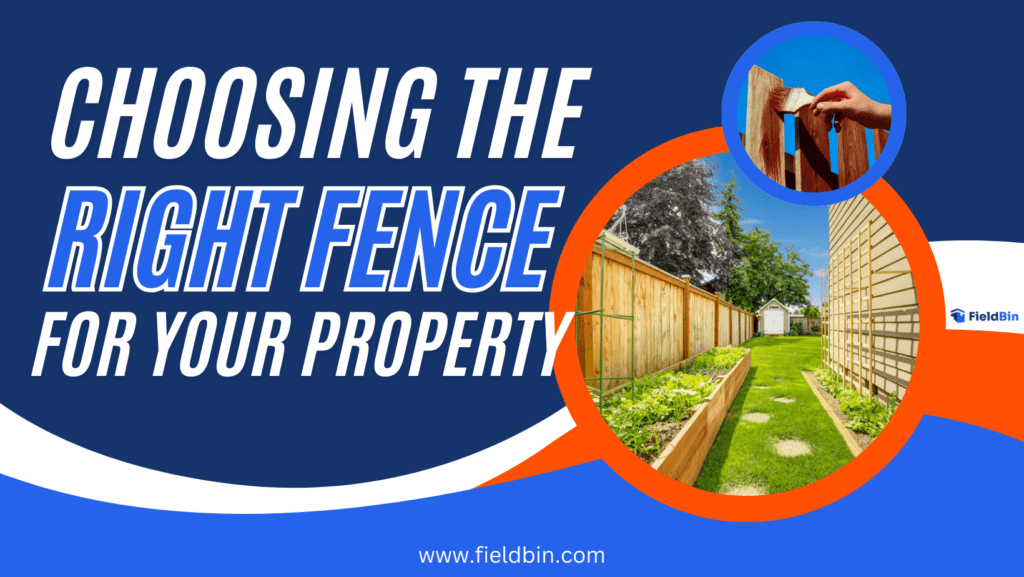Choosing the right fence for your property is a decision that impacts your home in many ways. A few years ago, when I had to make this choice, my priorities were clear: I wanted to keep my family safe, make our outdoor space more inviting, and do it all without breaking the bank or spending too much time on maintenance.
Like many homeowners, I quickly learned that picking the right fence is not just about selecting a material. It takes careful thought and a bit of planning to ensure you get something that works for your specific needs and enhances your home.
This guide is here to walk you through the key steps. We’ll cover the different materials and styles available, discuss how to set a budget, and explain why it’s important to follow local regulations. I’ll also share some of the things I learned along the way to help you avoid common mistakes.
Whether you’re debating between wood and vinyl, trying to get a handle on costs, or figuring out what rules you need to follow, this guide will give you the information you need. Choosing the right fence can add real value to your home, and with a little preparation, you can make a decision that you’ll feel good about for years to come.
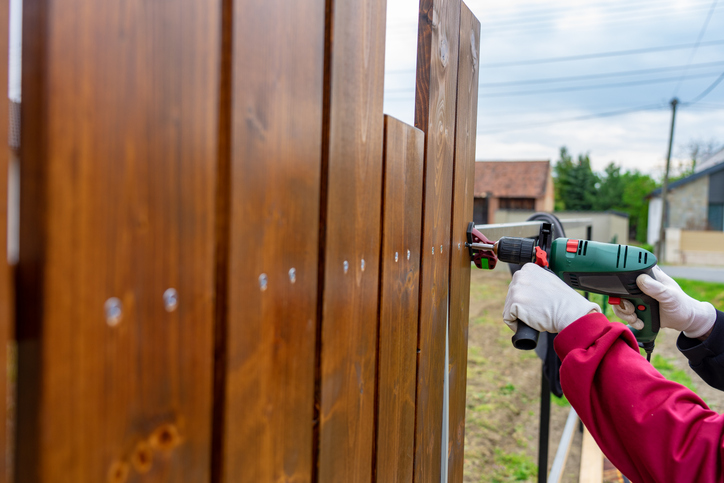
Assessing Your Needs: Privacy, Security, and Aesthetics
Before you decide on materials, styles, or installation methods, take some time to think about what you really need from your fence. When I faced this choice a few years ago, understanding my priorities made all the difference. It led me to a fence that not only suited our needs but also fit well with our lifestyle.
Privacy: If privacy is your main concern, consider a tall, solid fence made from wood, vinyl, or composite. I remember how exposed our backyard felt before we installed a wooden fence. That simple change provided the privacy we were looking for and made our outdoor space much more comfortable. For more insights on choosing privacy fences, check out this guide on privacy fencing options.
Security: If security is what you are after, focus on a sturdy, tall fence made from metal or wood. When we installed our fence, the addition of a secure, lockable gate made a significant difference in how safe we felt, especially with kids and pets around. The right fence gave us the protection we needed without feeling overwhelming. You can read more about security fencing solutions to find the best options for your property.
Aesthetics: If enhancing your property’s appearance is important to you, choose a fence that complements your home’s architecture and landscaping. For us, adding a wrought iron fence at the front was not just about marking our property—it brought a touch of style that perfectly matched our home. We still appreciate that choice every time we pull into the driveway. If you are interested in exploring different design ideas, this resource on fence design inspiration might be helpful.
By taking the time to identify whether your main focus is privacy, security, aesthetics, or a mix of these, you can better focus on the fence types that will work best for you. This approach helped me make a decision that met our needs and improved our enjoyment of our home.
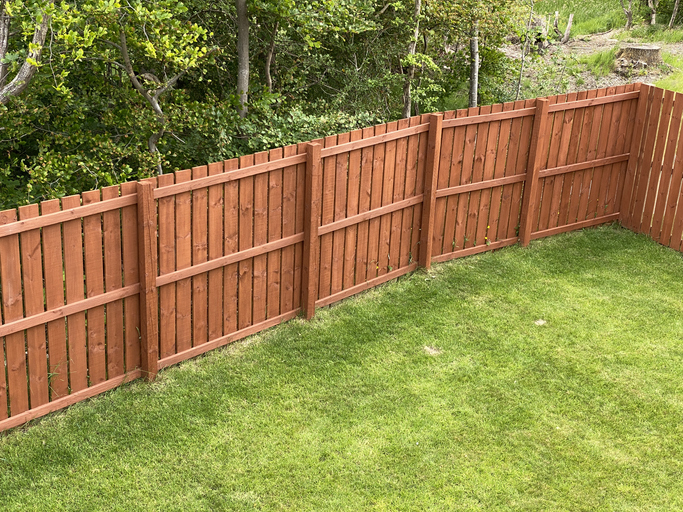
Exploring Fence Materials: Durability, Maintenance, and Cost
Choosing the right material for your fence is an important decision. It affects your property’s appearance and the time and money you’ll spend on maintenance. A few years ago, when we decided to install a fence, we had to determine what made the most sense for our needs, lifestyle, and budget.
Wood: Wood appealed to us because it complements many home styles and offers flexibility in height and finish. However, wood requires regular maintenance. The thought of having to stain and seal it every few years made us think twice. In the end, we chose wood because we loved the look, but we knew we’d have to stay on top of the upkeep. For more details on maintaining wood fences, you can check out this guide on wood fence care.
Vinyl: Vinyl was another option we seriously considered, especially after hearing from friends about how easy it is to maintain. Vinyl holds up well against weather and insects, so there’s little upkeep required. The idea of a fence that looked like wood without the hassle was tempting. However, the higher upfront cost gave us pause. Ultimately, we chose wood for the front yard, where aesthetics were key, but we seriously considered vinyl for the backyard, where practicality mattered more. If you’re interested in learning more about vinyl fencing, this overview of vinyl fence benefits might be helpful.
Metal (Aluminum, Steel, and Wrought Iron): Metal fences, especially wrought iron, caught our eye for their durability and how they could boost our property’s curb appeal. We liked that aluminum doesn’t rust, which is important in our humid climate. Steel, although stronger, would need occasional painting to prevent rust. Wrought iron, while tough and stylish, was more expensive. We ultimately chose wrought iron for the front garden because it matched our home’s style, despite the extra cost and maintenance. For more information on metal fencing options, you can explore this resource on metal fences.
Composite: We also explored composite fencing, which offers the look of wood with the durability of synthetic materials. It doesn’t rot or attract insects, and it’s environmentally friendly. However, the higher cost made us hesitate. In the end, we passed on composite because of the price, but it’s still a great option for those who want a long-lasting, low-maintenance fence that resembles wood. To learn more about composite fencing, this article on composite materials is a good read.
Chain-Link: For the less visible side of our property, where appearance wasn’t as crucial, we considered chain-link. It’s durable, easy to install, and affordable. While it’s not the most attractive option, it gets the job done. We used chain-link in areas where function mattered more than looks, and it’s served us well. If you’re thinking about chain-link fencing, this guide on chain-link fences offers useful insights.
In the end, we mixed materials to suit different parts of our property. We weighed the pros and cons, considered our budget, and thought about how much maintenance we were willing to take on. This approach helped us find a combination of fences that met our needs and improved our home. Striking a balance between what we wanted and what was practical has left us happy with our decision ever since.
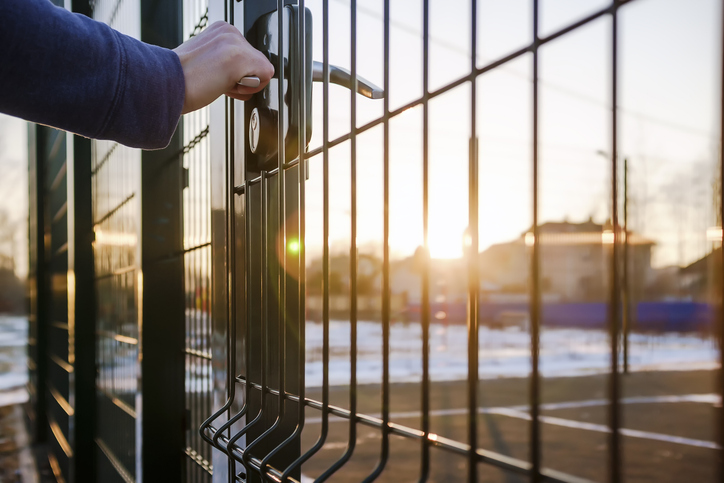
Deciding on Fence Design and Style
The design and style of your fence are just as important as the material you choose. The right design can enhance your property’s appearance and add value, while the wrong choice might detract from your home’s curb appeal. I learned this firsthand when we decided to install a new fence around our property a few years ago.
Traditional Picket Fences: Our house has a classic style, so we leaned toward a picket fence for the front yard. The vertical boards with pointed tops provided a simple, clean boundary. It marked the property line without closing off the yard, which was important to us. We liked how it defined the space while still letting us enjoy the view of our flower beds. If you’re considering a picket fence, this guide on picket fence styles might help.
Privacy Fences: Privacy was our main concern in the backyard. We wanted a space where we could relax without feeling like we were on display. We chose a tall, solid wood fence, and it worked just as we hoped. Adding lattice tops gave us the privacy we needed with a bit of added style. It really turned our backyard into a retreat. For more on privacy fences, check out this article on different privacy fence options.
Ranch or Post-and-Rail Fences: At the back of our property, there’s a small area that leads into the woods. We did not need much privacy or security there, just something to mark the boundary. A post-and-rail fence felt like the right choice. It was easy to install and blended naturally with the surroundings. It is also easy to maintain, which was a bonus for an area we do not use often. For those interested in this type of fence, here’s a helpful overview of post-and-rail fences.
Modern Horizontal Fences: My brother-in-law recently built a modern home and went with a horizontal fence for his backyard. I was unsure how it would turn out, but it really suited the space. The horizontal slats created a clean, modern look that matched his home’s design. He chose a composite material, which keeps the fence looking sharp with little upkeep, something he appreciates more as time goes on. If you’re considering a similar style, this resource on horizontal fences might be useful.
Ornamental Metal Fences: For our front garden, we considered a wrought iron fence. We liked the detailed designs and how they could add some character to our home. Although we eventually chose a picket fence, I still admire how wrought iron can make a statement. It works particularly well for older homes or those with a formal design. A neighbor of ours has one, and it fits their property perfectly while also adding a bit of security. For more information on ornamental metal fences, this guide on metal fencing is a good read.
Choosing the right fence design is not just about what looks good; it is about finding a style that fits your home and meets your needs. Whether you are focused on privacy, security, or simply improving your home’s curb appeal, taking the time to consider how different designs will work with your space makes a big difference. Looking back, I am glad we carefully weighed our options—it has made our outdoor spaces more enjoyable and functional.
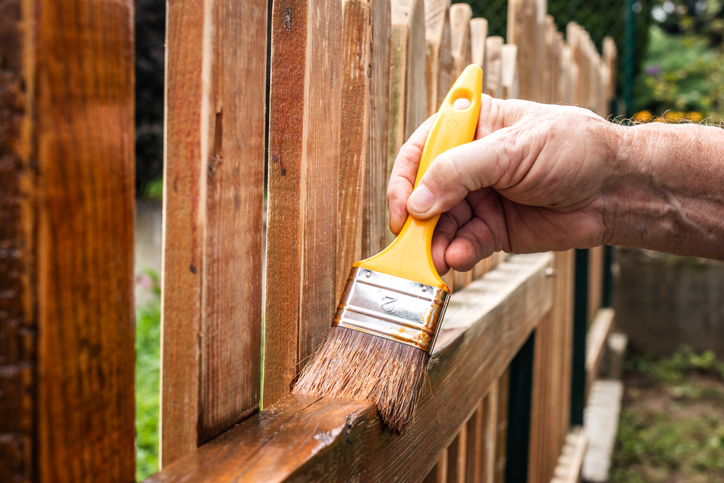
Legal and Regulatory Considerations
Before you install your fence, it is essential to understand and follow the legal and regulatory requirements in your area. When we put up our fence a few years ago, I quickly learned how important it is to get these details right. Overlooking even one can lead to fines or, worse, the need to take down the fence altogether.
Zoning Laws: The first thing we did when planning our fence was to check the local zoning laws. These rules often dictate how high your fence can be, where it can go, and what materials you can use. They are in place to ensure safety, avoid blocking views, and maintain the neighborhood’s appearance. For detailed information on local zoning regulations, check out this guide from the American Planning Association or visit your local zoning office’s website.
Homeowner Association (HOA) Rules: Since we live in a community with an HOA, we had to follow their specific guidelines for fence installation. These rules cover everything—from material and color to design. I initially wanted a different style, but after hearing from a neighbor who faced issues with the HOA, I decided to stick with their approved options. For a comprehensive overview of HOA rules and how they might affect your fence installation, read this article from the Community Associations Institute.
Property Lines: One thing I almost overlooked was determining our exact property lines. A friend suggested hiring a professional surveyor, which turned out to be a smart move. The actual property line was slightly different from what I had assumed. With the surveyor’s report in hand, we positioned the fence correctly, staying within our boundaries and avoiding disputes with our neighbors. Learn more about property surveys and their importance from this resource by the American Land Title Association.
Permits: I did not realize at first that we needed a permit to install our fence. Because our fence was planned to be over a certain height and close to a public road, the local government required us to submit our plans for approval. It added some paperwork, but it ensured we followed the rules. This step also protected us from potential issues if someone reported us for non-compliance. For information on obtaining building permits, visit this guide from the U.S. Department of Housing and Urban Development or your local municipal website.
Taking the time to understand and follow the legal requirements in your area can save you a lot of trouble and ensure your fence installation goes smoothly. In my experience, doing your homework ahead of time—whether it is checking zoning laws, getting HOA approval, confirming property lines, or securing a permit—makes the process much easier and less stressful. Preparing now will save you time, money, and headaches later on.
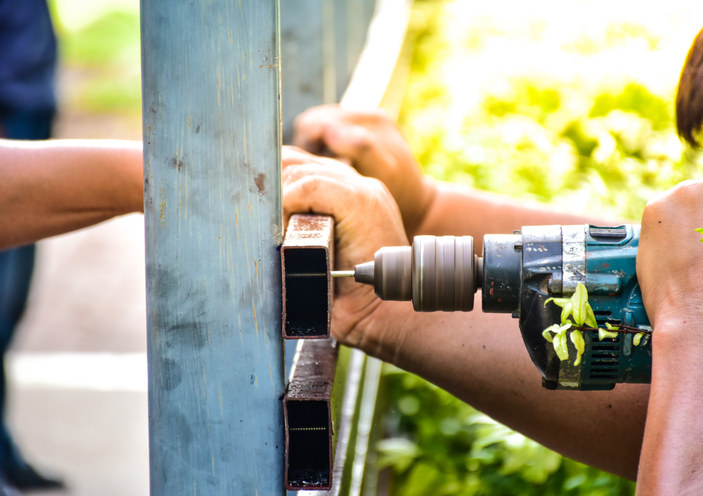
Budgeting and Cost Considerations
Installing a fence is a significant project, and understanding the costs involved will help you make the best choices for your budget. Here is a practical guide to managing those expenses:
Material Costs: Fence materials vary in price. Wood fences are typically less expensive initially but require more maintenance over time. I installed a wood fence in my yard a few years ago. Although it was affordable at first, it needed regular staining and painting to maintain its appearance. Vinyl and composite fences cost more upfront but are easier to maintain. For my most recent fence, I chose vinyl, which has been low-maintenance and durable. Metal fences, such as wrought iron or steel, are more expensive but offer durability and security. If you prefer a low-maintenance option with a long lifespan, vinyl or composite might be the best choice.
Installation Costs: Decide whether to install the fence yourself or hire a professional. I attempted a DIY fence installation once, and it turned out to be more complicated than I expected. Mistakes and extra materials increased the cost. If you are unsure about your DIY skills or if the project seems complex, hiring professionals could be a better option. They can ensure proper installation, saving you time and avoiding costly errors.
Maintenance Costs: Long-term maintenance is an important factor in budgeting. Wood fences require regular maintenance, such as staining or painting, which adds to the overall cost. Vinyl and composite fences require minimal upkeep. My experience with vinyl has shown that it is cost-effective over time due to its low maintenance. Metal fences may need periodic painting to prevent rust, particularly in humid or coastal areas.
Using a Fence Installation Cost Calculator: To get a clearer estimate of your costs, use a fence installation cost calculator. Tools like HomeAdvisor’s Fence Cost Calculator can provide estimates based on the material, size, and location of your fence. I found these calculators very useful for budgeting and avoiding unexpected expenses.
By evaluating material and installation costs, considering long-term maintenance, and using cost estimation tools, you can make informed decisions and stay within your budget. This approach will help ensure that your fence project meets your needs and remains financially manageable.

Installation: DIY or Hire a Professional?
Choosing whether to install your fence yourself or hire a professional can significantly impact your budget, timeline, and the overall result. Here’s a straightforward guide to help you navigate this decision:
DIY Installation: Installing a fence on your own can be cost-effective. I undertook a fence project in my backyard and found it both rewarding and challenging. Ensuring that the posts were straight and everything was level required more time and effort than I initially anticipated. If you opt for DIY, you will need tools like post hole diggers, levels, and concrete mix. Prepare to dedicate several weekends to the project. If you are comfortable with these tasks and have a relatively straightforward design and terrain, DIY might be a feasible option for you. For detailed instructions, refer to The Home Depot’s DIY Fence Installation Guide.
Hiring a Professional: If you want to avoid the complexities of installation or have limited time, hiring a professional is a practical choice. For a recent project involving uneven terrain and a custom design, I hired a local contractor. The professionals completed the job efficiently and handled unexpected challenges, such as adjusting the fence to fit uneven ground. This experience demonstrated that, although the cost was higher, the quality of work and convenience were worth it. Professionals have the tools and expertise needed to address complications and finish the job promptly. For finding a reputable contractor, you might explore Angi’s List for reviews and recommendations on local fence companies.
When deciding between DIY and professional installation, consider the complexity of your project, your budget, and how much time you can invest. If you choose to hire a professional, search for “fence companies near me” and review their feedback to find a reliable contractor.
By weighing these factors and reflecting on personal experiences, you can choose the installation method that best meets your needs and ensures a successful fence project. For more in-depth advice on choosing between DIY and professional options, visit This Old House’s Guide to Fence Installation.
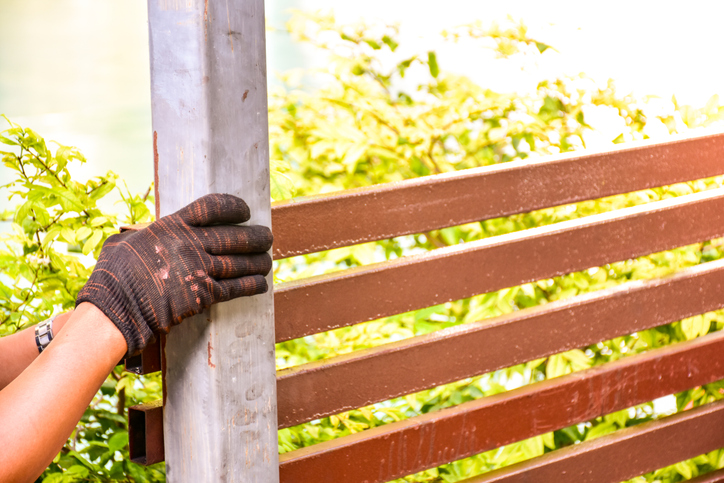
Enhancing Your Fence with Additional Features
After installing your fence, consider adding features that boost its functionality and enhance its appearance. These upgrades can increase security, add value, and improve your outdoor space.
Gates and Entryways
Adding a gate provides convenient access and can enhance security. For example, I installed a custom gate with an automatic opener, making it easy to enter and exit. Gates come in various styles and materials, so select one that complements your fence. For a detailed guide on gate installation, visit This Old House.
Decorative Elements
Decorative features can personalize your fence. I added decorative post caps, which made a noticeable difference. Options like lattice tops or finials can add visual interest. Integrating lighting can highlight the fence’s design and improve safety at night. For design ideas, see Houzz’s fence design collection.
Security Enhancements
To improve security, consider adding features like motion-activated lights, which can increase safety around your property. Additional options include cameras or motion sensors, which help deter potential intruders. You might also consider raising the height of your fence. For more security tips, visit Home Security.
Landscaping
Landscaping around your fence can help it blend with your property. For example, I planted climbing roses, which added visual appeal. Choose plants that enhance both your fence and the surrounding landscape. For landscaping ideas, check out Better Homes & Gardens.
These enhancements can make your fence more functional and visually appealing, customized to meet your needs and style.
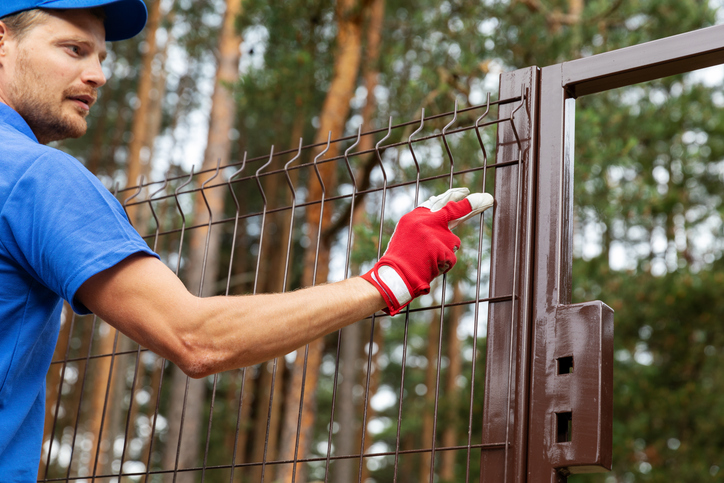
Making the Final Decision
After evaluating your needs, materials, design options, and budget, you are ready to make your final decision. Here’s how to ensure you choose the right fence:
Review Pros and Cons
Examine the benefits and drawbacks of each fencing option once more. Consider how well each option aligns with your priorities—privacy, security, or aesthetics. For example, while wood fences provide a classic look, they require regular maintenance. Our choice of vinyl over wood was influenced by our need for a low-maintenance solution. For more detailed comparisons, see This Old House’s guide on fence materials.
Consult a Professional
If uncertainty persists, consult a professional. A fence contractor or landscape designer can offer insights based on your specific needs. For instance, a contractor suggested a horizontal fence design that we hadn’t considered, and it proved to be an excellent fit for our home. Resources like Angi or the American Fence Association can help you find experienced professionals.
Think About the Long Term
Consider the long-term implications of your fence choice, including maintenance and durability. For example, a neighbor’s experience with a rapidly deteriorating fence highlighted the importance of selecting a durable material. Composite fences, which combine wood fibers and plastic, offer durability and require minimal upkeep. For more information, visit Home Depot’s guide to composite fencing.
Communicate with Neighbors
Lastly, consider the impact on your neighbors. Discussing your plans with them can prevent potential disputes. For instance, informing our neighbors about our fence design helped avoid misunderstandings. If you have a good relationship with your neighbors, this step can help ensure a smooth process. For tips on handling neighbor relations, read Better Homes & Gardens’ tips on fence etiquette.
By considering these aspects and drawing from real-life experiences, you can make an informed decision that enhances your property and meets your needs.
Conclusion
Choosing the right fence involves more than just picking a material—it’s about enhancing your property’s functionality and appearance. Start by defining your priorities. Whether you focus on privacy, security, aesthetics, or a combination of these factors, each aspect significantly impacts your final choice.
In my experience, I prioritized privacy and security when installing a fence in my backyard. I chose a tall, solid wood fence to block the street view and create a secluded space for family gatherings. However, I quickly learned that wood requires regular maintenance to prevent issues such as rot and warping. This taught me the importance of considering long-term care when choosing your fence.
Examine various materials and designs to find what best suits your needs. Vinyl and composite fences, for example, are known for their low-maintenance qualities compared to wood. Also, check local regulations and set a budget that covers both material and installation costs. Some fences can be installed as DIY projects, while others may require professional assistance.
Remember, a fence is more than just a boundary—it’s an investment in your home. With the right choice, you can improve security, boost curb appeal, and create a private outdoor area. Take the time to evaluate all these factors, and you’ll end up with a fence that not only meets your needs but also adds value to your property. For additional advice, consider consulting local experts or reviewing authoritative resources on fencing options.

